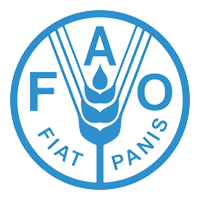Improving Index-Based Drought Insurance in Varying Topography: Evaluating Basis Risk Based on Perceptions of Nicaraguan Hillside Farmers
This paper discusses a methodology to model precipitation indices and premium prices for index-based drought insurance for smallholders. Spatial basis risk, which is borne by the insured, is a problem, especially in variable topography. Also, site-specific drought risk needs to be estimated accurately in order to offer effective insurance cover and ensure financial sustainability of the insurance scheme. We explore farmers' perceptions on drought and spatial climate variability and draw conclusions concerning basis risk with regards to the proposed methodology. There are technically many options to represent natural heterogeneity in index insurance contracts while serving the customer adequately and keeping transaction costs low.
Related Resources
Indicators of soil quality: A South-South development of a methodological guide for linking local and technical knowledge
This methodological guide was initially developed and used in Latin America and the Caribbean-LAC (Honduras, Nicaragua, Colombia, Peru, Venezuela, Dominican Republic), and was later improved during adaptation and use in eastern African (Uganda, Tanzania, Kenya, Ethiopia) through a South-South exchange...
The functions of facilitation in multi-stakeholder learning: lessons learned from capacity development on value chains management in innovation platforms in Burkina Faso and Ghana Jean-Joseph Cadilhon
Innovation platforms are groups of individuals or stakeholder representatives with different backgrounds and interests. They come together to diagnose problems, identify opportunities, and find ways to achieve their goals. When innovation platforms are set up by development projects, their processes...
Changing our ways: making sense of complex multi-stakeholder systems change by using the four quadrant model
This case study systematises the experiences of the ICCO Alliance in introducing a multi-stakeholder approach in all of its relations with partner organisations and in its development cooperation practice. Using Ken Wilber’s framework of institutional change, the author presents the...
From Best Practice to Best Fit: A Framework for Designing and Analyzing Pluralistic Agricultural Advisory Services Worldwide
The article provides a conceptual framework and discusses research methods for analyzing pluralistic agricultural advisory services. The framework can also assist policy-makers in identifying reform options. It addresses the following question: Which forms of providing and financing agricultural advisory services...



